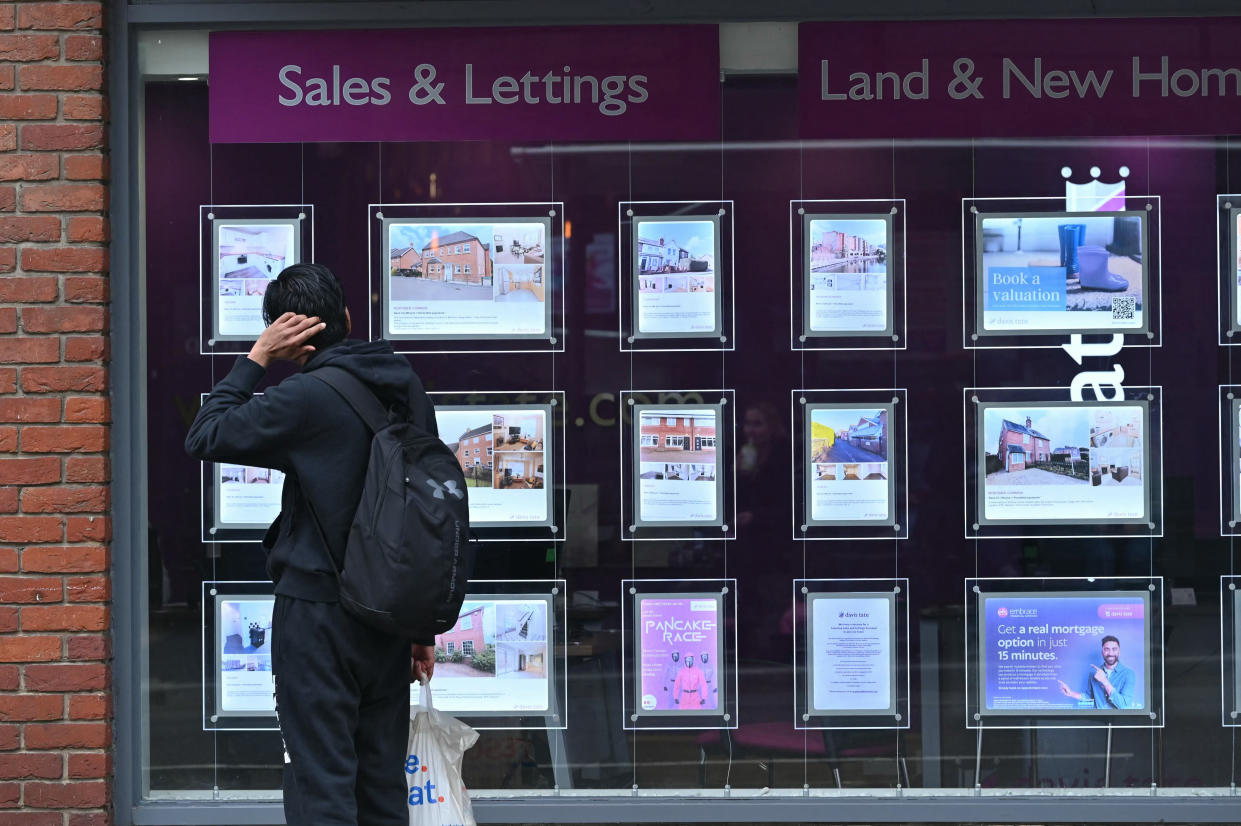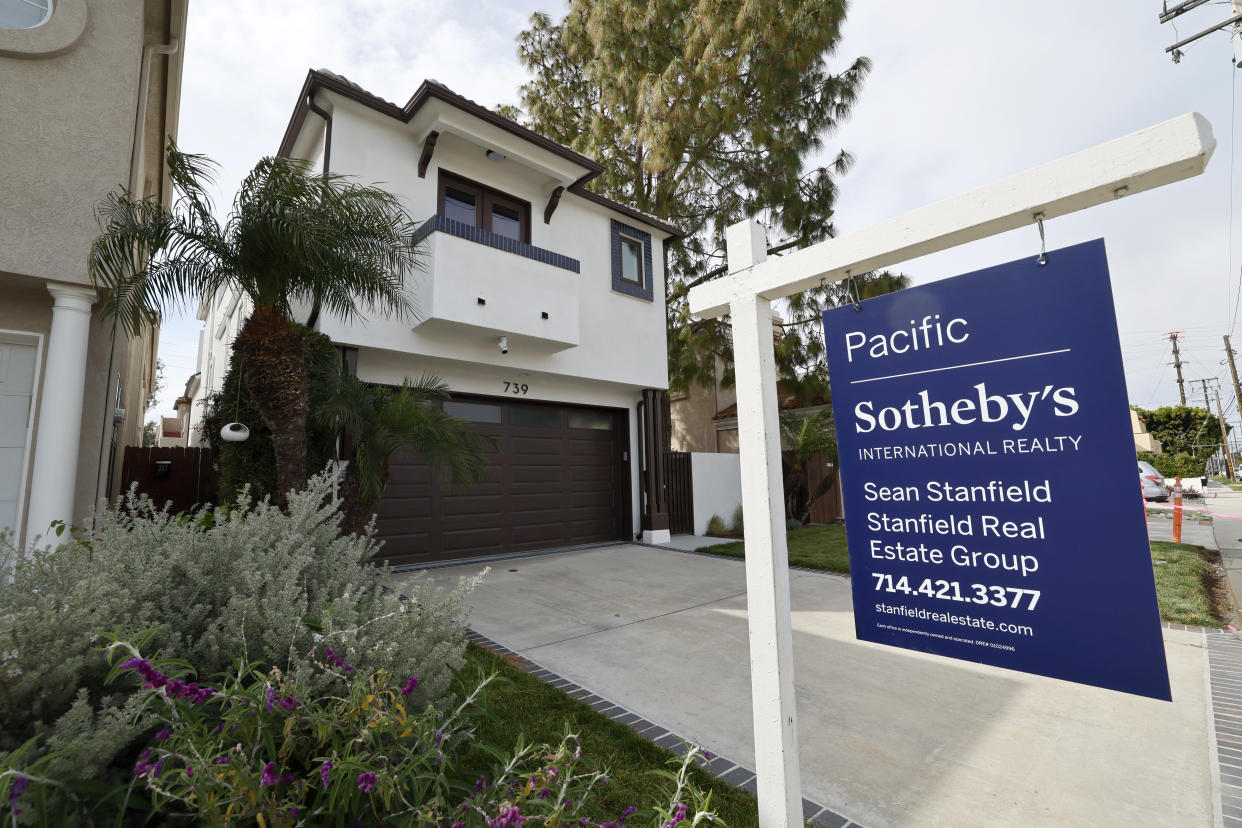Mortgage rates top 7% following hotter-than-expected inflation numbers
Homebuyers are feeling whiplashed by surging mortgage rates, and the outlook just turned grim.
The average rate on the 30-year mortgage increased to 7.37% on Thursday, a steep climb from 7.11% at the beginning of the week, according to Mortgage News Daily. The quarter-point increase comes as rattled investors respond to a hotter-than-expected inflation reading.
At the same time, a separate measure tracking weekly average rates rose to 6.88%, up from 6.82% the week prior, Freddie Mac found.
Elevated rates have left would-be buyers in a pinch, causing both repeat and first-time buyers to step away from any purchase plans. For many, any shift in rates means losing more of their purchasing power.
With inflation still running hot this past month, the results haven’t been favorable for mortgage borrowers, housing industry experts said.
“March inflation figures were very bad, which also means bad news for interest rates,” said Lawrence Yun, chief economist at the National Association of Realtors.
Read more: Mortgage rates top 7% — is this a good time to buy a house?
Mortgage refinances spike
As rates crested the 7% threshold, the share of refinance applications surprisingly spiked.
The volume of applications to refinance a home loan jumped 10% for the week ending April 5 and was 4% higher than the same week one year ago. The surge in applications was driven by Veterans Affairs (VA) refinance applicants, the Mortgage Bankers Association (MBA) reported.
One reason why homeowners could have been in a haste to refinance was the threat of rising rates. In January, refinance demand shot up by 30% compared to a year ago when rates averaged 6.62% per Freddie Mac.
As rates again hover in the high-6% range, homeowners are showing how attuned they are to small shifts. Leading the refinance surge were government loan applicants in hopes of snagging a lower rate.
They are also, most likely, composed of new homeowners who purchased when rates peaked last year or weren’t able to refinance during the refinance wave that occurred early on in the pandemic.
Nationally, nearly 80% of US homeowners with a mortgage have a rate under 5% as of January, Redfin found. Nearly 60% have rates below 4% — and some 22% of homeowners carry rates under 3%. That’s far below today's average rate of 6.88%.
The rule of thumb for refinancing is that you can reduce your interest rate by at least 2%, though in today’s market, many homeowners are happy to reduce their rate by 1%.
Read more: Mortgage refinance: How to get started
Buyer pessimism worsens as rates edge higher

While homeowners rushed to refinance their loans, the story couldn’t be more different for would-be buyers.
Demand for purchase applications fell 5% for the week ending April 5, the MBA found, and were 23% below year-ago levels. Buyers have grown sensitive to rates since last year, when rates first began to lift from ultra-lows, a theme that’s unlikely to budge anytime soon.
“Mortgage rates have remained in the 6.6% to 7% range since the beginning of the year and will likely continue to hover in this range until inflation shows convincing progress toward the Fed’s 2% goal,” Hannah Jones, senior economic research analyst at Realtor.com said.
The inflation reading for March stood at 3.5%, higher than anticipated and far from the Fed’s goal. As a result, the Federal Reserve is widely expected to delay planned rate cuts this year — keeping rates “higher for longer.”
The development has soured housing sentiment.

Some 34% of consumers surveyed in March believe that mortgage rates will go up over the next 12 months, up from 32% the month prior, according to Fannie Mae’s measure on homebuyer confidence. Only 29% of respondents believe rates will decline over the next year.
Rates are only part of the equation, as buyers are also contending with stubbornly high home prices and still-tight inventory as competition for the spring is due to pick up in the coming weeks.
That’s made folks in the market to buy grow even more pessimistic. Only 21% of those surveyed by Fannie Mae said it was a good time to buy a home.
However, there could be some hope on the horizon in the form of more inventory trickling into the market.
“With historically low rates of the pandemic era now firmly behind us, some households appear to be moving past the hurdle of last year’s sharp jump in rates, an adjustment that we think could help further thaw the housing market,” said Doug Duncan, Fannie Mae senior vice president and chief economist.
Fannie Mae now predicts rates will end the year at 6.4%, up from the 5.9% predicted a month ago. Sellers also seem to be coming to terms with the “new normal” of higher rates and may be more amenable to listing.
A separate analysis of the housing market showed that this was already proving true. According to Realtor.com, the number of homes actively for sale increased by 23.5% in March, marking its fifth straight month of growth.
The first three months of the year also clocked in the highest share of homes actively for sale since 2020, the report showed.
Gabriella Cruz-Martinez is a personal finance and housing reporter at Yahoo Finance. Follow her on X @__gabriellacruz.
